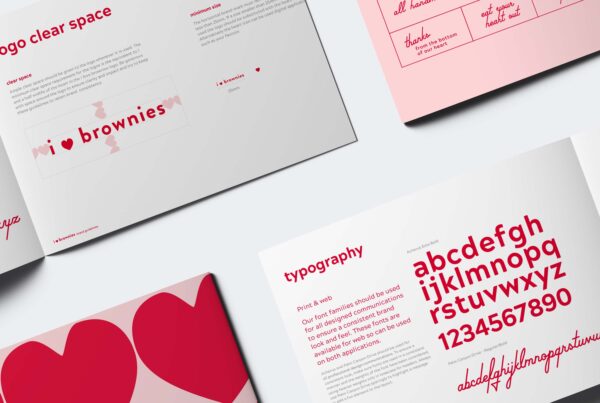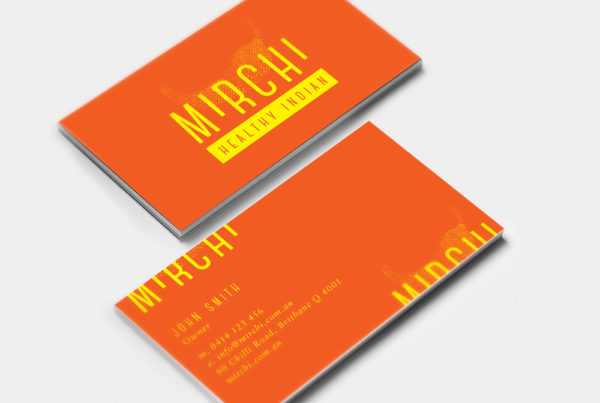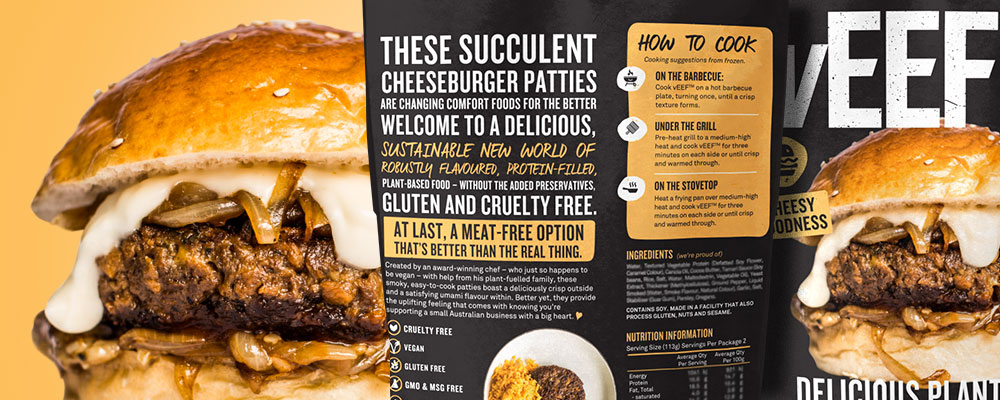
Read this article if you’re curious about the things you MUST and SHOULD include on your packaging design in Australia. I’ve included quick links so you can reference this article when you’re hunting for the information. It’s a tool I wish I had when I was designing my first packaging job. It can be a tool for you to use to help you better source the information you need to brief a designer.
As a Packaging Designer in Australia I have many times attempted to Google this information and this has led me on a goose chase around multiple Government websites to try and find the appropriate information. This is what has prompted me to write this article to hopefully help you with finding the right information for your food packaging and fast! There are various places to find the information you need as a start up or company launching a new product so, here it is in one place (most of it anyway). There may be things I have missed so please also do your own research but use this as a tool for the foundations to get started. Note: This article is written on October 2020 and information may date.
If we take a step back, generally the steps in the journey of your packaging design go like this;
- Decide on a product you’re passionate about and want to spend 1/3 of your waking hours working on.
- Hone in on your brand messaging, the why, what and who (I’ve written another post on this, go check it out.)
- Find an awesome brand identity and packaging designer to develop your brand.
- Read the article below to figure out what the heck to include on your packaging and what information you need to put on your packaging.
Information you SHOULD include
From experience here is a list of information I would recommend including if you’re a food startup business in Australia. This is broad and will really depend on your product and how you are positioning yourself. These are not required by law but are definitely nice to haves that will help move your product off the shelves and into your consumers baskets.
During my time as a graphic designer I have learnt alot about packaging design, I have summarised my view of the items that SHOULD be put on your packaging to give it the best chance of making it.
- Callouts. Up to 3 callouts on the front of your packaging. Why will someone pick up your product? After defining your target persona you should know exactly the sweet spots that will make them go… Oooooh I MUST have it.
- Cooking Instructions. People like some help! Better yet a new recipe and a link back to your website and social media. People also love feeling apart of something so create a buzz. What?! Your mango juice can create a mango curry, I didn’t even think of that! That’s the reaction you’ll get.
- Your brand story. Do you have a cool or authentic story to tell? If yes then share it, more likely people will connect with you and buy your product again (even if they don’t read it on the shelf they may read it when they get home while they are waiting for the kettle to boil). Put this on the back generally to invoke connection to your prodouct and brand.
- Tips, advice or referral to another one of your products. People need prompting and if they know you also do other flavours that perhaps weren’t available at time of purchase this pushes up selling in a casual way.
- Product benefits, maybe your customer buys your product for their skin and find out it also helps with digestion. Tell them, they won’t figure it out themselves.
- Recycling information, sometimes this will help someone decide to buy a product if they are environmentally conscious. Again look at your persona and figure out if this is an important thing to them.
- Health Star Rating is voluntary to put on your packaging design and help people make informed decisions about their health. This isn’t mandatory but most professional packaged food companies include this. Perhaps don’t include it if you have a low star item where this doesn’t work in your favour.
- A detailed description so at first glance they can see what’s in it or what it might taste like. I’d recommend bringing on a copywriter to help make it sound like the most delicious thing ever!
- Photography, Illustrations or Cutouts: Asses your product and figure out if you want a photographed image of your product or if you want to show it through the packaging with illustrations. If your product doesn’t look that appealing best to go with photos of beautifully curated food images.
You can see 3 packaging designs I have designed below which have gone down different routes based on their product offering and target audience.
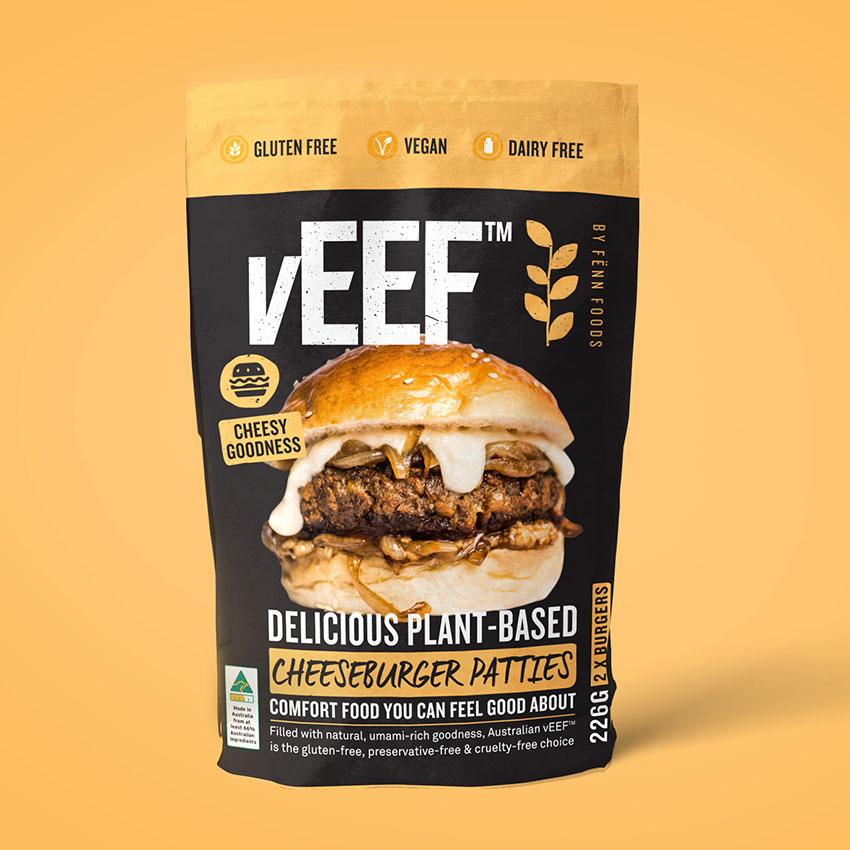
vEEF is a frozen burger pattie so won’t be appealing to show. In this case we have used the photo of a fully cooked burger with oozing vegan cheese to make the product appealing and picked up on the shelf.
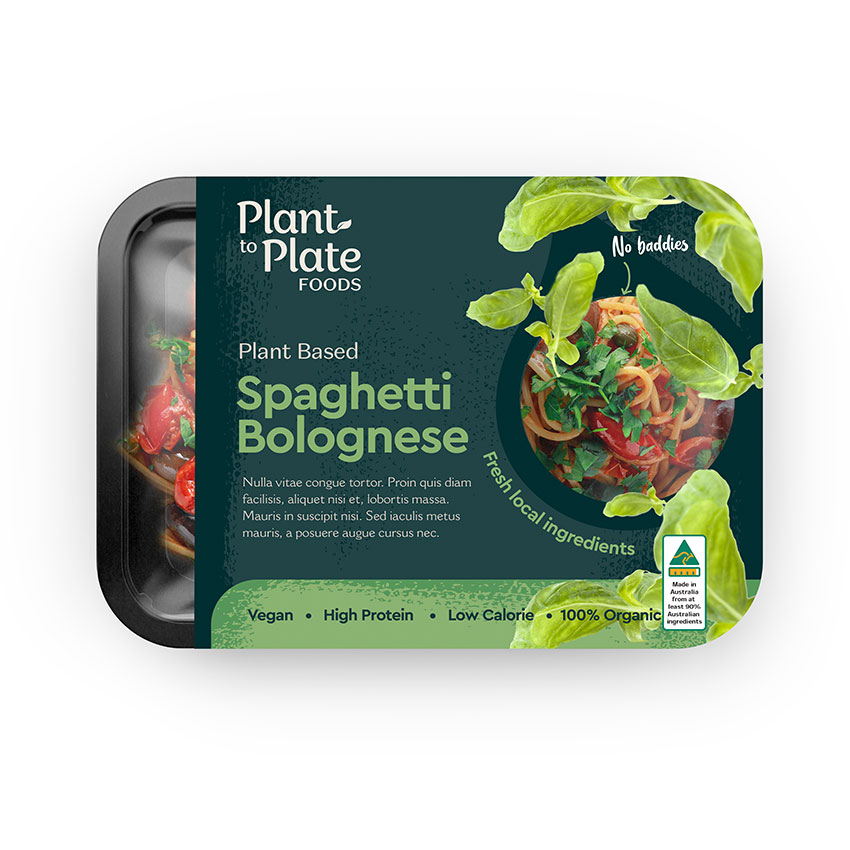
This product is a frozen but slightly more appealing product, as it’s a full meal people generally want to see what the actual product looks like. I have seen too many times the cardboard ripped from packages so we want to avoid this by showing a small portion of the product through a cutout area and adding freshness with basil leaves.
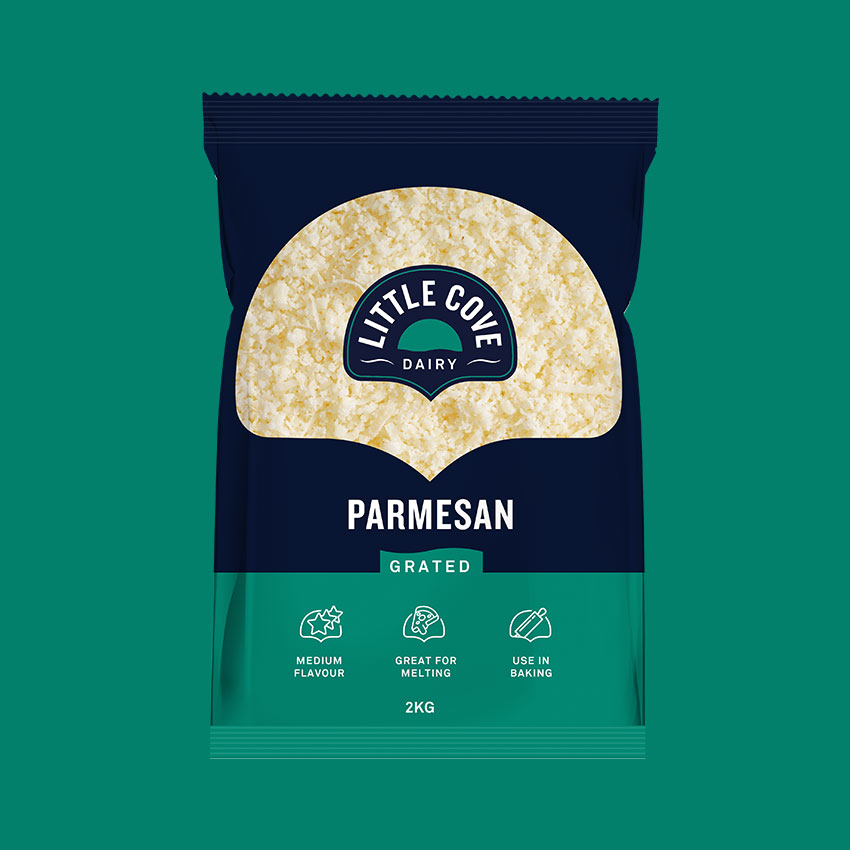
Little Cove Dairy is a refrigerated product that doesn’t look overly pretty but customers want to see the grate size. In this case it is a food service product so a simple cutout area and clean design with colour being the distinguishing factor between cheese types enough.
Information you MUST include
Below is my list of must include items on your food packaging in Australia. This list may need to be added to but should get you started on your hunt for the information. Having this information from the beginning when you brief in your packaging designer will really help streamline the process and make sure nothing is missed.
I have summarised a list of items that MUST be put on your packaging to make sure you don’t run into trouble. Please note this is correct as of October 2020, please take this as a resource to add to your own research.
Name and/or Description of the food
Always outline the name of your food and a detailed description is recommended.
The weight
Always include the net weight on the front of your packaging, there are detailed specifications on the industry.gov.au website.
[button open_new_tab=”true” color=”accent-color” hover_text_color_override=”#fff” size=”medium” url=”https://www.industry.gov.au/data-and-publications/guide-to-the-sale-of-pre-packaged-goods/labelling-requirements” text=”Weight Specification Guide” color_override=””]
Ingredients list
Following the correct Food Standards guidelines. As this information is suuuuper bland I like to make it a bit fun. On the vEEF packaging we wrote “Ingredients… We Love” as the heading. This helps just inject your brand personality into every aspect of the packaging, even the super dry bits.
[button open_new_tab=”true” color=”accent-color” hover_text_color_override=”#fff” size=”medium” url=”https://www.foodstandards.gov.au/code/userguide/Documents/Guide%20to%20Standard%201.2.4%20-%20Ingredient%20Labelling%20of%20Foods.pdf” text=”Ingredient Labelling of Foods (PDF)” color_override=””]
Nutritional Information
[button color=”accent-color” hover_text_color_override=”#fff” size=”medium” url=”https://www.foodstandards.gov.au/code/userguide/Documents/Userguide_Prescribed%20Nutrition%20Information%20Nov%2013%20Dec%202013.pdf” text=”Nutrition Information User Guide (PDF)” color_override=””]
Country of origin label.
It is required by Australian Law to outline the country of origin percentages.
[button open_new_tab=”true” color=”accent-color” hover_text_color_override=”#fff” size=”medium” url=”https://www.business.gov.au/Products-and-services/Product-labelling/Country-of-origin-food-labelling-resources” text=”Product Labelling Resource” color_override=””] [button open_new_tab=”true” color=”accent-color” hover_text_color_override=”#fff” size=”medium” url=”https://www.business.gov.au/products-and-services/product-labelling/calculating-australian-content” text=”Australian Made Percentage Calculator” color_override=””]
Distribution information
Name and street address of the supplier.
Barcode
The standard for retail in Australian is GS1. Tip: Make sure you get your barcode tested through GS1 before printing 1BILLION products (ok overexaggeration) but get tested. I promise you won’t regret spending the extra money. It’s like insurance for your packaging.
[button open_new_tab=”true” color=”accent-color” hover_text_color_override=”#fff” size=”medium” url=”https://www.gs1au.org/how-to-get-a-barcode/?gclid=Cj0KCQjwn7j2BRDrARIsAHJkxmwLpSg07JOeAycLd1cNSHyw6zm5QZc2kePcXJ79piW2BYH7zQEmNfkaAuG8EALw_wcB.” text=”How to get a Barcode (GS1 Website)” color_override=””]
Warning or advisory Statements
Advisory statements must be provided for certain foods or ingredients which may cause health risks for some consumers. Below is the link to more information on what needs to be included and the minimum size.
[button open_new_tab=”true” color=”accent-color” hover_text_color_override=”#fff” size=”medium” url=”https://www.foodstandards.gov.au/consumer/labelling/advisory/Pages/default.aspx” text=”Advisory Guidelines (Food Standards Website)” color_override=””]
Best Before or Use by date
This is generally a white space where overprint of the best before or use by date will be printed or a sticker.
I welcome you to come back here to access the links you need, when you need them.
So in summary below are the should have’s and must have’s for your food packaging design in Australia. Do your own research and reference this article for the links to some of my most used resources.
Should have’s
- Callouts
- Photography, illustration or cutouts
- Cooking instructions
- Your brand story
- Tips, advice or referral to other products in the range
- Product benefits
- Recycling information
- Health star rating
- Description
Must have’s
- Name and/or description
- Weight
- Ingredients list
- Nutritional information
- Country of origin
- Distribution information
- Barcode
- Warning or advisory statements
- Best before or Use by date


